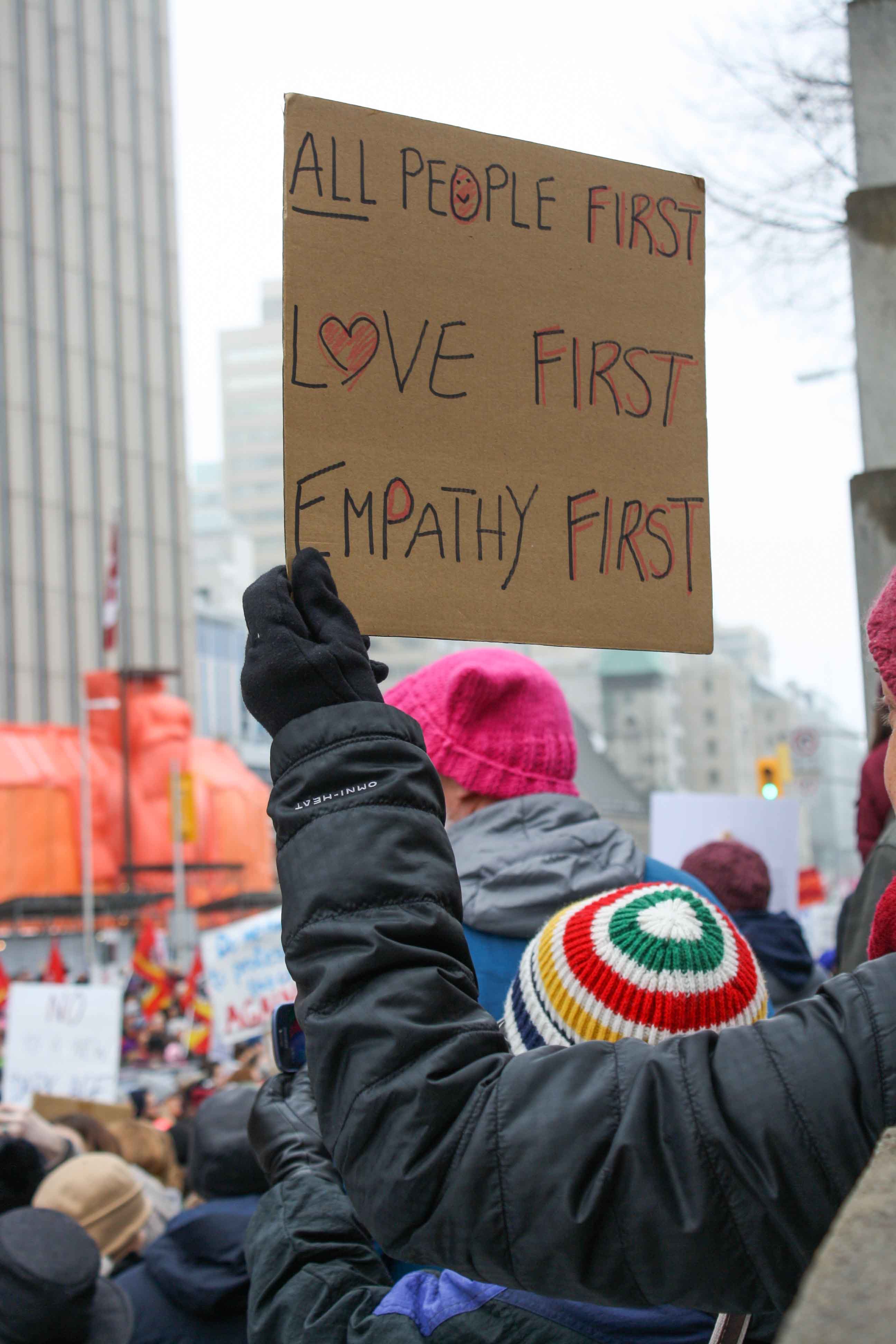One hour before the Women’s March in Ottawa on Jan. 21, about 20 people stood at the Human Rights Memorial, chatting, smiling, and sipping hot drinks while the fog settled over downtown Ottawa.
One little girl stood with a sign that read, “Women can be president too.” By the start of the march at 11:00 A.M., what at first was just a handful of people had become hundreds—and by the end of the march, thousands.
The Ottawa Police estimated between 6,000 and 8,000 people marched from Elgin Street down Laurier Avenue to Bronson Centre. The sea of supporters were chanting, wearing pink “pussy hats,” and holding picket signs with catchy slogans.
Only 800 protestors were allowed in the Bronson Centre for musical performances and speeches after the march, which was the largest venue the organizers could secure.
The Ottawa rally was just one of over 30 marches across the country, joining a global movement aiming to fight for women’s rights.
Catherine Butler, the lead organizer of the Ottawa march, said there were two reasons for the protest. First, to stand in solidarity with women in the U.S. and second, to make “a very clear, proactive act on the part of Ottawa women to tell the citizenry, politicians, and political parties that this is a shot over the bow.”

“We will not tolerate in Canada, in this city in particular, the type of divisiveness, hatred, misogyny, and racism that is being formulated and is brewing in America because of the last presidential election,” Butler said.
The grassroots campaign, which started in the U.S., spread quickly across the world garnering support from countries in every continent.
According to multiple news outlets, the goal of the Women’s March on Washington was to protect women’s rights in the face of a divided nation due to Donald Trump winning the recent U.S. presidential election.
Speaker Francyne Joe, president of the Native Women’s Association of Canada, said there is a relation between the American protest and Canada.
“We are not so naive as to think that this fear and resentment towards certain groups does not exist. Unfortunately, in our own country, racism and sexism are woven into the fabric of our society—sometimes discreetly, sometimes not,” she said.
Butler also mentioned Canada’s harsh reality.
“We may be very fortunate here right now, but we cannot be complacent. We are all one election cycle and one government away from facing a very different future politically,” Butler said.
She also emphasized that all people, regardless of identity, were welcome to march in an inclusive and intersectional event.
Fourth-year Carleton psychology student Nathan Bryan said he “chose to march because women everywhere have struggled and continue to struggle just to be afforded the same basic human rights as men.”
“As a man who has been afforded a lot of privilege, I decided it was time to stop being a bystander,” he added.
Alli Shields, a fourth-year Carleton human rights student, said she wants to continue being an activist.
“I am not going anywhere. I’ll be writing letters, speaking out on social media and going to protests that resist the hatred Trump’s administration has spewed,” Shields said.
She said she felt a sense of community and even healing in the face of a Trump presidency.
“The atmosphere was overwhelming, positive and inspiring. [Having] so many like-minded people coming together in such numbers was an incredible sight,” Bryan said.
Butler joked that sleep would be the first item on her to-do-list after the march completed, but also said it was just the start.
“This is not a one-time event,” she said. “This is the beginning of a movement . . . Women are tired [and] we will no longer tolerate environments that have been created to hold us back.”

– Photos by Taylor Barrett






